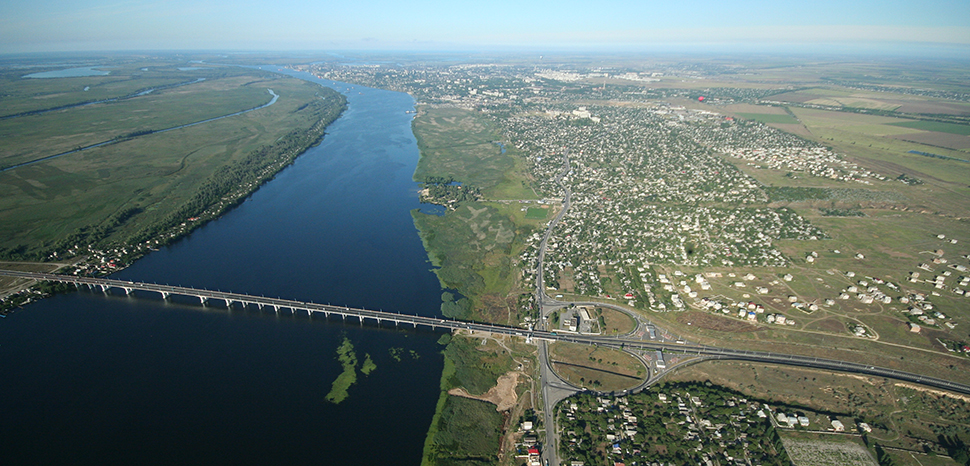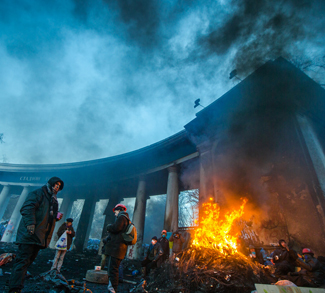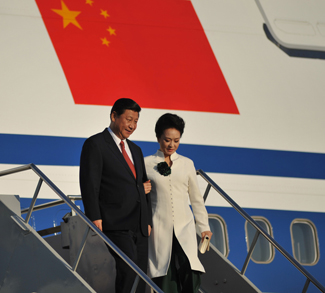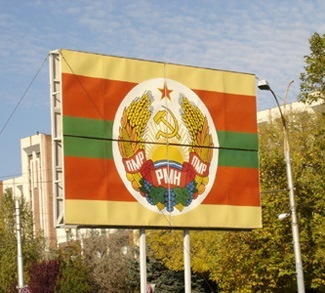The Kherson oblast was one of the first regions of Ukraine to experience the onslaught of Russian forces following the launch of the invasion in February. With defenders largely caught off guard, Russian forces gained a solid foothold through most of the oblast, stabilizing its lines of defense despite Ukraine managing to hold onto some villages. The dynamic finally began to change during the summer as Western weapons starting pouring in.
Planning months in advance, and patiently waiting for heavier weapons support from allied nations, Ukraine has managed to slowly reverse Russia’s early gains, recapturing numerous villages since the summer. In particular, the High Mobility Artillery Rocket System (HIMARS) has been an effective game-changer in the war, allowing Ukrainian forces to strike far behind enemy lines and degrade their logistical capabilities.
Such strikes have been common over the past few months as Ukraine has prepared for a counteroffensive on Kherson. High-value targets included ammunition dumps, fuel depots, logistical hubs, and command and control centers, along with Russian forward positions in Nova Kakhovka and the outskirts of Kherson city. The Antonovsky and Kakhovskiy bridge has been hit with such accuracy over the past several weeks that only civilian vehicles can pass over it. The structure of the bridges in Kherson has been compromised to the point where military vehicles cannot traverse it. By targeting these bridges, the UAF have effectively cut off Russia’s main supply routes to Kherson, which ran from the south bank of the Dnipro River.
With the bridges largely out, the Russian armed forces have not been able to use them to reinforce their positions in Kherson. RF have instead resorted to using makeshift pontoon bridges to transport key supplies and reinforcements. Yet given the accuracy of Ukrainian strikes thus far, there’s no reason to believe that these pontoon bridges can’t also be targeted.
As the Kherson oblast is geographically flat and well-fortified with anywhere from 20,000-25,000 Russian troops, Ukraine will not be in a rush to take the city, but instead look to besiege Russian forces and slowly strangle their supply lines. A slight miscalculation could mean thousands of casualties for Ukrainian forces.
Kherson is more vulnerable now than at any other time during the occupation, especially following attacks on Russian military bases in Crimea. President Zelensky is attempting to send the message that Russian occupying forces are not safe anywhere. Moreover, Crimea is critical for reinforcing Kherson as the Black Sea Fleet, coveted by Russia, has now been effectively degraded.
Following a series of humiliating setbacks, such as the sinking of the Moskva, losing dozens of fixed wing fighter jets from long-range strikes, and allowing mass panic to disrupt tourism on the peninsula, the Kremlin relieved its Black Sea Fleet commander of duty. There are also unconfirmed reports that the Black Sea Fleet has moved its fighter wing out of Crimea, further degrading the Russian military’s ability to conduct close air support with forces occupying Kherson. Russia has similarly had to move some of its Black Sea Fleet ships away from the peninsula for fear of Neptune and other Western missiles that can disrupt sea operations and naval bombardment support in southern Ukraine.
Now that autumn weather will soon hit Ukraine, where winter generally comes far faster than in Western Europe, attrition will start to bear down on Russian forces in the city. Russia seems to already be preparing for the worst, as commanders have already left Kherson for Melitopol, leaving occupying forces without a forward command structure, hampering ground-level operations and leaving the door open for mutiny and dissent.
Owing to constant heavy fighting and the Russian armed forces not properly taking care of repairs in occupied cities such as Mariupol, energy considerations project to play a significant role in any protracted siege during a Kherson offensive. One might argue that one of the main reasons Zelensky and Ukrainian military command advised civilians to leave the city as quickly as possible was to put the further squeeze on Russian supply lines, which are exposed and constantly targeted. Recently, several Russian helicopters have been downed by Ukraine, likely thanks to Western air defense systems that have poured into the country. Russia will look to prioritize strikes against HIMARS platforms and resupply the city via helicopter airlifts; however, this forces their pilots to take more chances in dangerous air space, increasing their potential losses.
With dwindling resources at the onset of winter, the siege projects to be extremely perilous for civilians trapped in the city. Largely unsupplied Russian forces can be expected to ransack food, water, and gas from the residents of Kherson. This in turn risks further massacres and war crimes against civilian populations.
Russian military administration and governmental figures have looked to rush a proposed referendum on the annexation of the Kherson oblast, despite not even controlling the entirety of its territory. These plans will continue to be hindered by the offensive, along with the growing partisan movement behind Russian lines. Russian soldiers and pro-Russian collaborators who support the referendum have been targeted throughout the war, with an uptick of assassinations coinciding with preparations for the offensive. Partisans will look to continue to hinder the operations of the occupational forces and sow discontent within their garrisons. If history is any guide, this of course could lead to mounting frustration among the Russian armed forces, and potentially even retaliation massacres similar to what we saw in Bucha and Irpin.
Despite Ukraine’s recent momentum, the Russian garrison is still very much entrenched in Kherson. Ukraine needs all the heady weapons it can muster to counterbalance the artillery advantage that Russia possesses. Putin will look to continue to extort Europe through grain and energy to dissuade military support for Kyiv. Putin’s playbook has always been a game of bluff – whenever the world caves and does nothing, he takes more, as events in Georgia in 2008 and Ukraine in 2014 have made clear. When Russia is confronted with strength, such as Turkey’s shooting down of a Russian jet in 2015 or Sweden and Finland joining NATO, the bluffs no longer carry any weight.
Western resolve to continue arming Ukraine will be tested this upcoming winter, and it will inevitably prove decisive in the outcome of the war. As the southern offensive heads toward a war of attrition, where resources matter now more than ever, Kyiv needs full military and diplomatic support to liberate the south. It is a marathon, not a race. Russia is racing against time before their economy and military implode—Ukraine is defending their homeland and has time on its side. One way or another, the battle of Kherson is shaping up to be a decisive turning point in the war.
The views expressed in this article belong to the authors alone and do not necessarily reflect those of Geopoliticalmonitor.com




